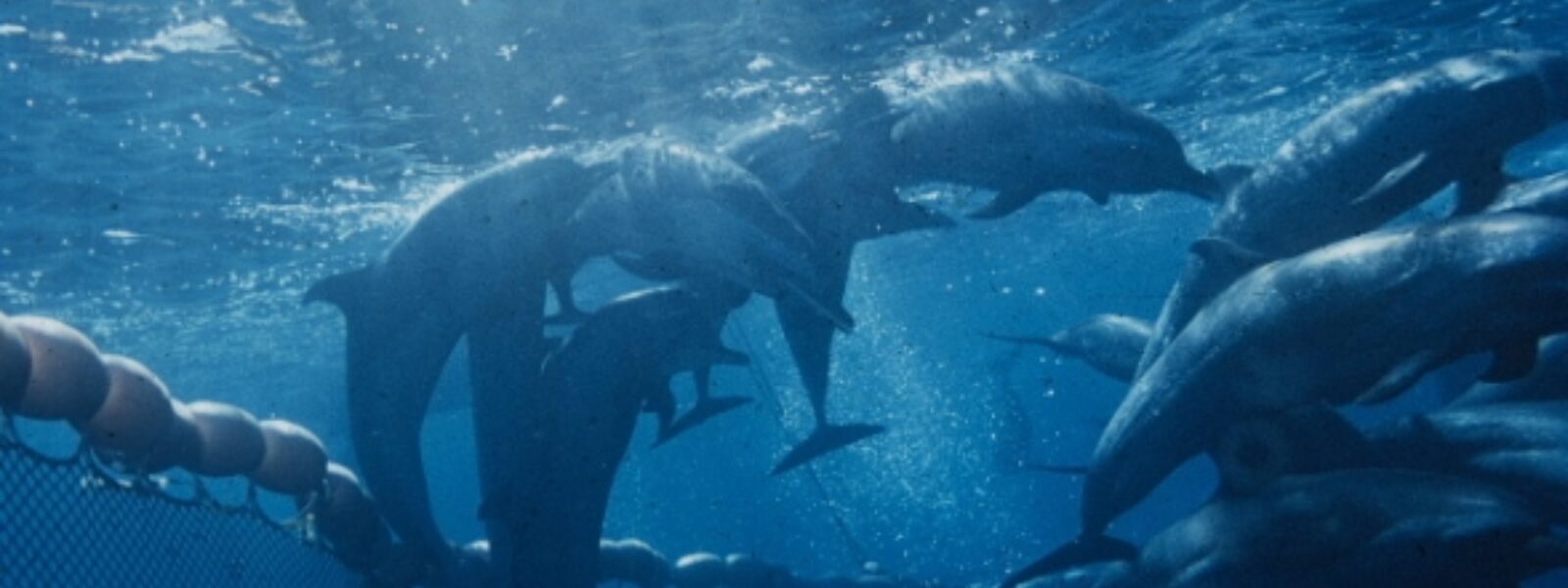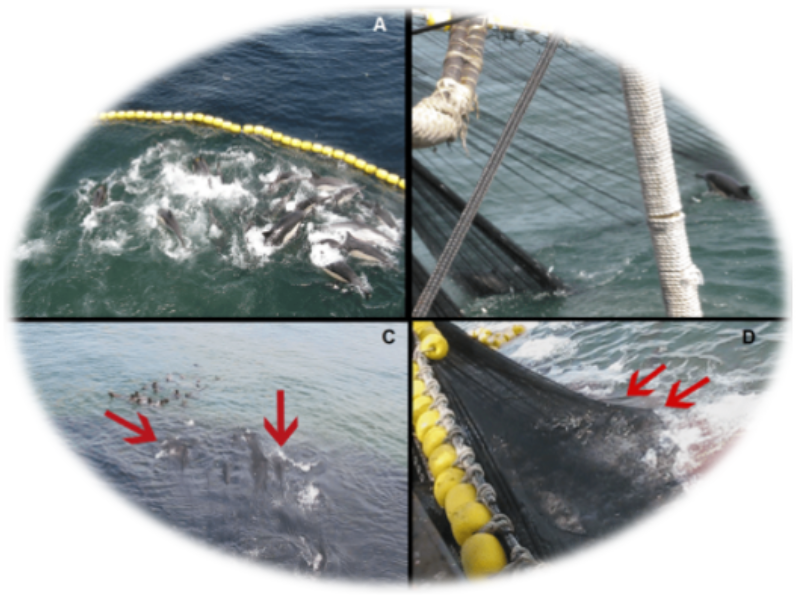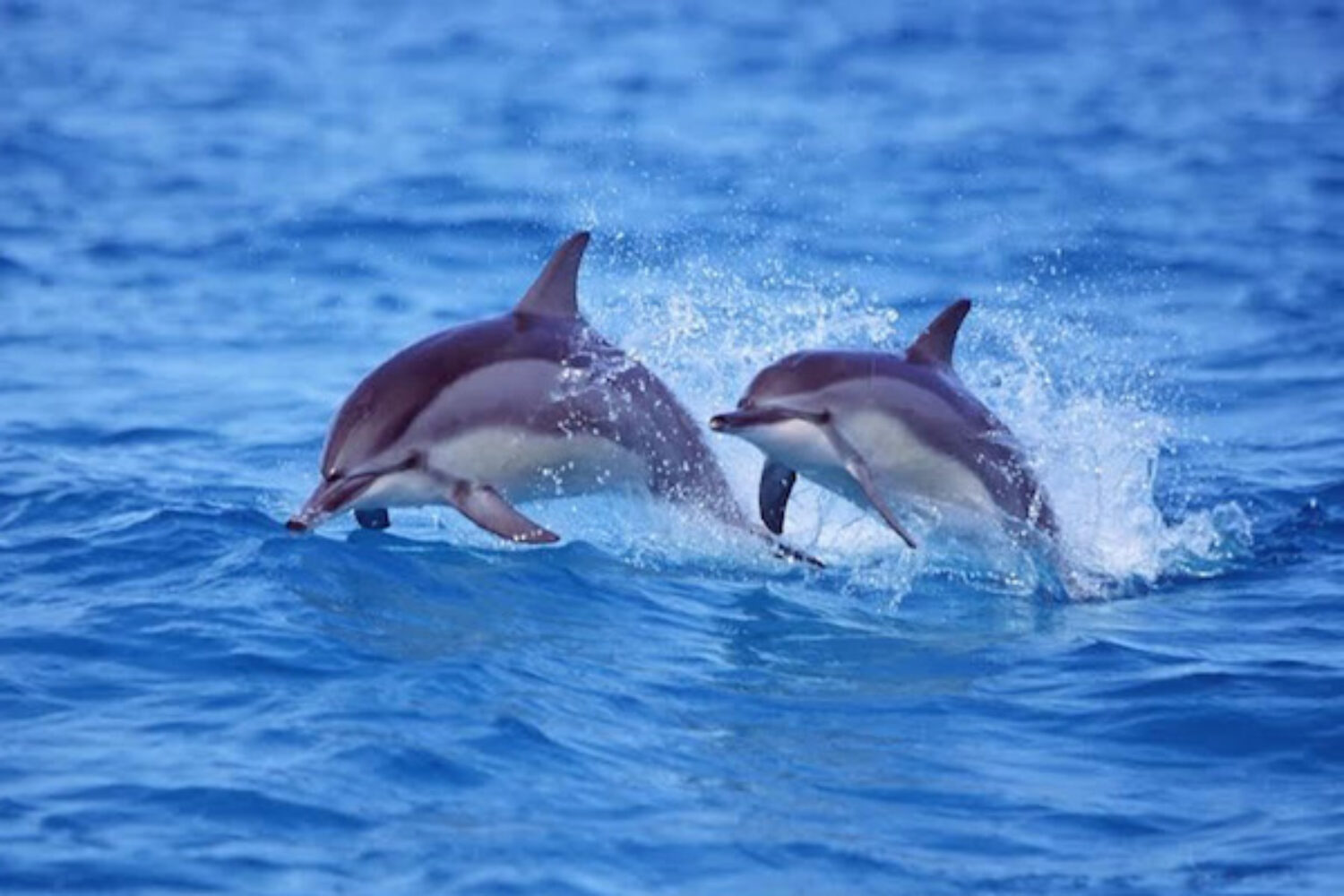
IMMP Supports CCTV Onboard Tuna Vessels to Ensure Dolphin Safe
Dolphins drowned in tuna nets, as recorded by CCTV.

By Kayleigh Brookes
Kayleigh Brookes is a nature conservationist, writer and campaigner living in the United Kingdom. She loves the ocean and all of its wonderful inhabitants, especially orcas. She is passionate about protecting the natural world, celebrating its wonders, raising awareness of issues and tackling them.
Before the adoption of Dolphin Safe standards in 1990, due to pressure from the International Marine Mammal Project (IMMP), the tuna fishing industry had been one of the worst for its negative impact on dolphins. Dolphins and tuna are closely associated in the Eastern Tropical Pacific Ocean. Before the advent of better and safer methods, tuna used to be caught by purse seine netting of dolphins in order to catch the tuna that swim beneath them.
The Dolphin Conservation and Consumer Protection Act in 1990 established strong Dolphin Safe standards to safeguard dolphins from premature deaths resulting from this fishing practice. Before this law was in place, 80,000 to 100,000 dolphins were killed each year due to the deliberate targeting, chasing, and netting of dolphins to catch tuna . This law was first implemented in the United States, and the example was followed by many other countries around the world. Now, roughtly 95% of tuna vessels worldwide comply with the Dolphin Safe standards . In the Eastern Tropical Pacific, dolphin mortality has been reduced by more than 99% since the enactment of Dolphin Safe label laws.
Unfortunately, hundreds of dolphins still die in nets set on dolphins by tuna fleets of Mexico, Venezuela and Colombia. Tuna from those countries should be avoided. IMMP of Earth Island Institute (EII) has been influential in making tuna fishing a much more dolphin friendly industry. They monitor tuna companies worldwide, inspecting vessels, storage facilities, and canneries for proof of best fishing practices.
At present, in order to monitor fishing activities, official observers are situated on board tuna fishing vessels to oversee how the tuna is caught. Often there can be difficulties in obtaining these reports, and a more reliable method has been devised. The installation of closed circuit television cameras onboard fishing vessels would allow video monitoring of operations, and will make the process of surveillance much easier and help verify that fishing vessels are not setting nets on dolphins. The CCTV system would send the footage directly to IMMP for review.
Paolo Bray, Founder and Director of Friend of the Sea and Director of International Programs for the IMMP Dolphin Safe program, says:
CCTVs can really help the Dolphin Safe program in monitoring the actual fishing method, in particular on board purse seiners. A couple of cameras can allow viewing and monitoring the deployment of the nets and making sure that no dolphins are in the net at the time of deployment, nor when the tuna catch is unloaded on deck and in the wells.
We hope that by the end of 2022, the combination of the above services will allow for an even more thorough monitoring and further reassurance of consumers regarding the Dolphin Safe status of the tuna and Friend of the Sea sustainability certification.Studies have shown that the use of CCTV can be an effective alternative system to having onboard observers or in combination with government observers. The cameras monitor almost anything that an observer could, and in some cases do even more. Other benefits include the fact that having CCTV installed comes at a much lower cost, there is no risk to human life (several government observers have disappeared at sea), and no chance of bribery nor waiting for reports to be sent in.
Tuna fishing companies are urgently being implored to comply with CCTV measures by IMMP and Friend of the Sea and are receiving increasing pressure to do so from both governments and non-governmental organisations. It is likely that having CCTV installed on board will become mandatory in the future -- for example, the European Union are considering making CCTV a requirement. In some cases, vessels without CCTV would not be able to sell their tuna under the Dolphin Safe label.
Consumers are becoming increasingly aware and concerned about the environmental impacts of the products they are buying, where they come from, and how they are obtained. Therefore companies attempting to sell tuna without the Dolphin Safe label are likely to struggle, as people will be more inclined to purchase tuna that has been caught without causing harm to dolphins.
IMMP has been working on rolling out this extra safeguarding method for several years, and has established working partnerships with two major providers of CCTV systems, which have both developed their own packages to ensure a standardized service is provided to the shipowners. Contact has already been made with major shipowners in Ecuador. It is expected that the first implementations can be reported by the end of this year.
IMMP has been able to develop virtual monitoring techniques for tuna companies around the world during the COVID pandemic. Combined with government observers onboard tuna vessels, backed up by CCTV arrays, the future looks bright for protecting more dolphins from harm by tuna fleets. Please consider a donation to help IMMP monitor tuna companies to ensure dolphins are not harmed by the tuna industry around the world. Thank you!
